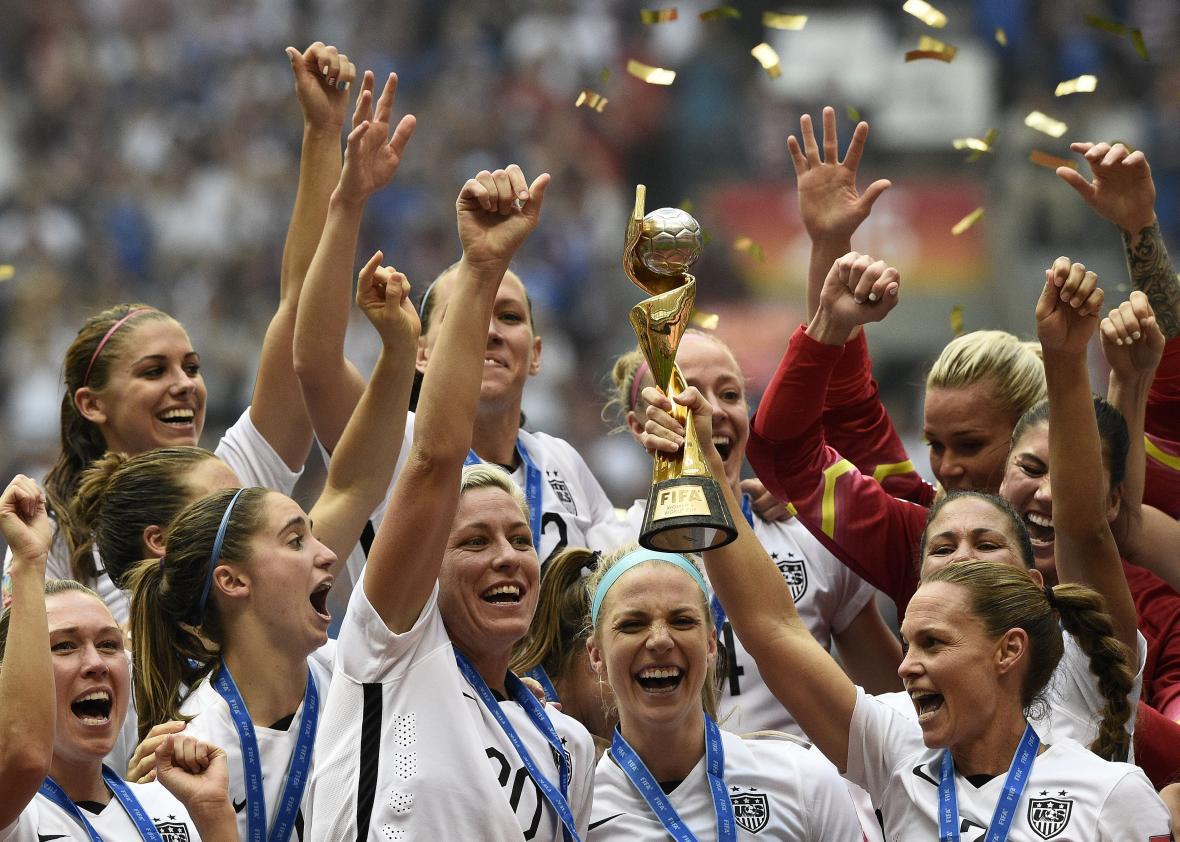The U.S. women’s national soccer team is getting a nice PR boost for its fight for equal pay during the Olympics. A new ad from UltraViolet, a feminist advocacy group, makes a concise argument against a current U.S. Soccer payment structure that pays the men’s team more for just showing up to a game than it pays women for a major win. It will air on NBC stations in Seattle and Baltimore on Tuesday, when the networks will air the U.S. women’s soccer team’s game against Colombia at 6 p.m., and on news sites for sports outlets like ESPN and Sports Illustrated.
The ad features a splitscreen of a male soccer player and a female soccer player dribbling, chugging water, and wiping sweat from their faces. “The United States women’s national team trains just as hard. They run just as hard. They play just as hard,” says the narrator. “And they win it all on turf.” That last bit is a sick burn against U.S. Soccer, which overlays grass on top of synthetic turf for the men’s team, but not for women, causing unsafe playing conditions and torn-up legs.
Then, the female player tries to kick the ball into the goal, but she’s thwarted by an invisible pane of glass. “The glass ceiling? It’s still there,” the ad says. It’s more like a glass wall, and it looks like the ball almost breaks it, and glass ceilings usually refer to women ascending to positions of power, not wage disparities—but who are we to nitpick about logical consistency when a team full of real-life superheroes is getting paid less than the mere mortals on the men’s side?
Women’s national soccer players have been agitating about equal pay for more than a decade. In 2000, straight off Olympic and World Cup wins, the team went on strike to protest wages that didn’t come close to what the losing men’s team was making. Five of the current team’s most famous players filed a federal wage discrimination complaint with the Equal Employment Opportunity Commission in March, accusing U.S. Soccer of paying them up to 40 percent less than the U.S. men’s team. The women make less than a quarter of what the men make for a World Cup win, for instance, despite the fact that they’ve been bringing U.S. Soccer the majority of the money and good press with their many World Cup and Olympic wins.
At one point, it looked like the current U.S. women’s national team might strike before the Rio Games. The team took U.S. Soccer to court in May to establish the legality of a strike—U.S. Soccer said the players’ union was bound by a no-strike clause extended in a 2013 memorandum of understanding, but the players said the clause expired in their old contract. A federal judge ultimately ruled in favor of U.S. Soccer. Since a strike’s off the table and it looks like U.S. Soccer won’t budge on its own, third-party advocates like UltraViolet—and the U.S. Senate, which passed a unanimous resolution in May supporting the team’s equal pay claims—might be the team’s best shot at the millions of dollars of back pay it deserves.
